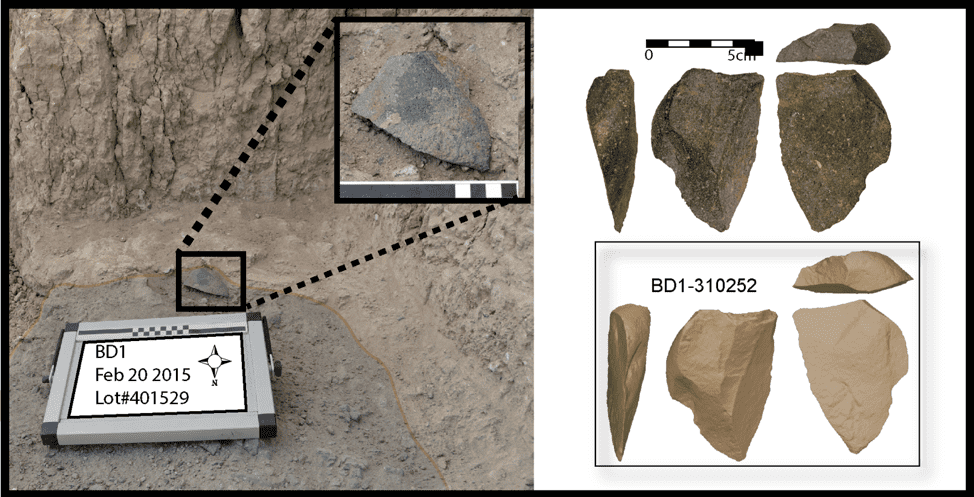A new archaeological site reveals that prehistoric stone tools were invented at least 2.58 million years ago, and were invented multiple times between 2.58 and 2.55 million years ago.

The site in Ethiopia is called Bokol Dora 1, and is very close to where the oldest fossil of our genus was found in 2013. The fossil, a jaw bone, is important to our understanding of human evolution. It’s also 200,000 years older than the first evidence of flaked stone tools. Researchers have been trying to find a connection between these two elements, and now they finally have it.
The breakthrough came when Arizona State University geologist Christopher Campisano noticed some sharp-edged stone tools sticking out of the sediments on a steep, eroded slope.
“At first we found several artifacts lying on the surface, but we didn’t know what sediments they were coming from,” says Campisano. “But when I peered over the edge of a small cliff, I saw rocks sticking out from the mudstone face. I scaled up from the bottom using my rock hammer and found two nice stone tools starting to weather out.”
It took a few years to delicately excavate the sediments, a dig that exposed hundreds of animal bones and small pieces of stone tools. The site turned out to offer a trove of valuable archaeological data about how and when humans developed and started using stone tools. Remarkably, everything was in excellent shape — the site is close to a water source which quickly buried the remains in sediment.
“Looking at the sediments under a microscope, we could see that the site was exposed only for a very short time. These tools were dropped by early humans at the edge of a water source and then quickly buried. The site then stayed that way for millions of years,” noted geoarchaeologist Vera Aldeias of the Interdisciplinary Center for Archaeology and Behavioral Evolution at the University of Algarve, Portugal.
Kaye Reed, who studies the site’s ecology, also noted something interesting about these tools: they are very similar to those found a few kilometers away, although the environment is very different. There doesn’t seem to be any connection between these tools either, indicating that the invention was made on separate occasions, multiple times.
The overall picture is extremely complex, but it does seem that at some point around 2.6 million years ago our ancestors became more accurate and skilled at producing these tools, which are very different from the ones made by chimps or other animals. It was a crucial and defining moment in human evolution, paving the way for mankind’s emergence as a dominant species.
The study “Earliest known Oldowan artifacts at >2.58 Ma from Ledi-Geraru, Ethiopia, highlight early technological diversity,” has been published in the Proceedings of the National Academy of Sciences.






